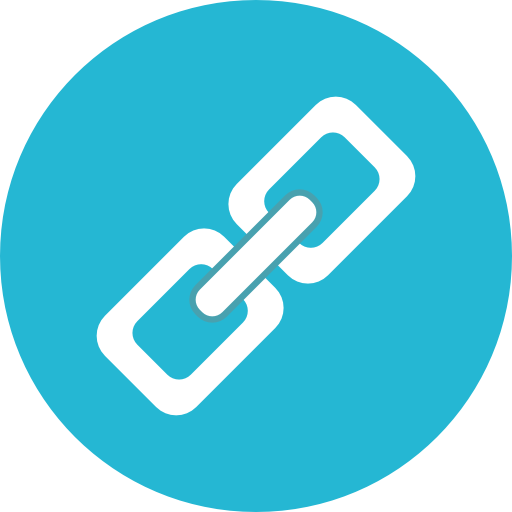دوره جامع Microsoft Azure
Microsoft Azure یک پلتفرم جامع رایانش ابری است که طیف گستردهای از خدمات از جمله ماشینهای مجازی، ذخیرهسازی، پایگاههای داده، ابزارهای هوش مصنوعی، راه حلهای DevOps و شبکه را ارائه میدهد و به کسب و کارها اجازه میدهد تا برنامهها را به طور کارآمد در سراسر شبکه جهانی مراکز داده (data centers) بسازند، مستقر کنند و مدیریت کنند.
یادگیری Microsoft Azure برای مهندسان نرمافزار بسیار مهم است زیرا به طور گسترده توسط شرکتها برای راه حلهای ابری پذیرفته شده است و فرصتهای شغلیای را در نقشهایی مانند مهندس ابر، توسعهدهنده نرمافزار و متخصص DevOps فراهم میکند.
ادغام آن با محصولات مایکروسافت، قابلیتهای ابری ترکیبی و ابزارهای هوش مصنوعی، آن را به ویژه در صنایعی که از سیستمهای مبتنی بر ویندوز استفاده میکنند، ارزشمند میکند.
یک معلم خصوصی میتواند با ارائه یک رویکرد ساختاریافته و پروژههای واقعی که نحوه استفاده از سرویسهای Azure مانند Azure App Services، Azure DevOps و Azure AI را آموزش میدهند، روند یادگیری را تسریع بخشد. علاوه بر این، معلم خصوصی میتواند فراگیران را در آماده شدن برای گواهینامههای Azure راهنمایی کند و آنها را برای بازار کار رقابتی ابری آماده کند.
Chapter 1: Introduction to Microsoft Azure
- Lesson 1: What is Microsoft Azure?
- Lesson 2: History and Evolution of Azure
- Lesson 3: Core Benefits and Use Cases of Azure
- Lesson 4: Azure Global Infrastructure (Regions, Availability Zones)
- Lesson 5: Setting Up an Azure Account and Portal Walkthrough
Chapter 2: Understanding Azure Fundamentals
- Lesson 1: Overview of Azure Services (Compute, Networking, Storage, Security, AI)
- Lesson 2: Azure Pricing and Cost Management
- Lesson 3: Azure Resource Manager (ARM) and Management Groups
- Lesson 4: Introduction to Azure CLI and Azure PowerShell
- Lesson 5: Azure Governance: Policies, Blueprints, and Compliance
Chapter 3: Compute Services in Azure
- Lesson 1: Understanding Azure Virtual Machines (VMs)
- Lesson 2: Deploying and Managing VMs in Azure
- Lesson 3: Azure Virtual Machine Scale Sets (VMSS)
- Lesson 4: Azure Kubernetes Service (AKS) and Container Instances
- Lesson 5: Azure Functions and Serverless Computing
Chapter 4: Azure Networking
- Lesson 1: Azure Virtual Network (VNet) Basics
- Lesson 2: Configuring Network Security Groups (NSGs)
- Lesson 3: Azure Load Balancer, Traffic Manager, and Application Gateway
- Lesson 4: VPN Gateway and ExpressRoute
- Lesson 5: Azure DNS and Azure Content Delivery Network (CDN)
Chapter 5: Azure Storage Solutions
- Lesson 1: Introduction to Azure Storage Accounts
- Lesson 2: Azure Blob Storage and File Storage
- Lesson 3: Azure Queue Storage and Table Storage
- Lesson 4: Azure Disk Storage (Managed and Unmanaged)
- Lesson 5: Data Encryption, Backup, and Recovery in Azure
Chapter 6: Azure Databases
- Lesson 1: Overview of Azure Database Services
- Lesson 2: Azure SQL Database and Managed Instances
- Lesson 3: Azure Cosmos DB and NoSQL Databases
- Lesson 4: Azure Database for MySQL, PostgreSQL, and MariaDB
- Lesson 5: Azure Synapse Analytics and Data Warehousing
Chapter 7: Identity and Access Management in Azure
- Lesson 1: Introduction to Azure Active Directory (Azure AD)
- Lesson 2: Implementing Azure AD Multi-Factor Authentication (MFA)
- Lesson 3: Role-Based Access Control (RBAC) in Azure
- Lesson 4: Azure AD B2B and B2C Services
- Lesson 5: Identity Protection and Conditional Access Policies
Chapter 8: Azure Security and Compliance
- Lesson 1: Understanding Azure Security Center
- Lesson 2: Azure Defender and Threat Protection
- Lesson 3: Azure Firewall, DDoS Protection, and Sentinel
- Lesson 4: Compliance Offerings and Azure Policy
- Lesson 5: Secure Development Practices in Azure
Chapter 9: Monitoring and Management in Azure
- Lesson 1: Introduction to Azure Monitor and Log Analytics
- Lesson 2: Azure Application Insights and Metrics
- Lesson 3: Automating Tasks with Azure Automation and Logic Apps
- Lesson 4: Azure Service Health and Alerts
- Lesson 5: Managing Azure with Azure Arc
Chapter 10: Azure DevOps and CI/CD
- Lesson 1: Introduction to Azure DevOps Services
- Lesson 2: Creating and Managing CI/CD Pipelines in Azure
- Lesson 3: Infrastructure as Code (IaC) with ARM, Terraform, and Bicep
- Lesson 4: Azure Repos and GitHub Integration
- Lesson 5: Azure Test Plans and Release Management
Chapter 11: Artificial Intelligence and Machine Learning in Azure
- Lesson 1: Overview of AI and ML Services in Azure
- Lesson 2: Azure Machine Learning Studio
- Lesson 3: Cognitive Services (Vision, Speech, Language, Decision)
- Lesson 4: Bot Services and Conversational AI
- Lesson 5: Azure OpenAI Service and Generative AI in Azure
Chapter 12: Internet of Things (IoT) in Azure
- Lesson 1: Introduction to Azure IoT Services
- Lesson 2: Azure IoT Hub and Device Management
- Lesson 3: Azure IoT Edge for Edge Computing
- Lesson 4: Analyzing IoT Data with Azure Time Series Insights
- Lesson 5: Security Considerations in IoT Implementations
Chapter 13: Hybrid and Multi-Cloud Solutions with Azure
- Lesson 1: Understanding Hybrid Cloud and Multi-Cloud in Azure
- Lesson 2: Implementing Azure Stack and Azure Arc
- Lesson 3: Integrating Azure with AWS and Microsoft Azure
- Lesson 4: Networking and Security in Hybrid Cloud
- Lesson 5: Best Practices for Hybrid and Multi-Cloud Deployments
Chapter 14: Advanced Topics in Microsoft Azure
- Lesson 1: Serverless and Event-Driven Architectures in Azure
- Lesson 2: Azure Quantum and Future Trends in Cloud Computing
- Lesson 3: Managing Large-Scale Applications in Azure
- Lesson 4: Cost Optimization Strategies for Azure Deployments
- Lesson 5: New Features and Updates in the Latest Azure Releases




